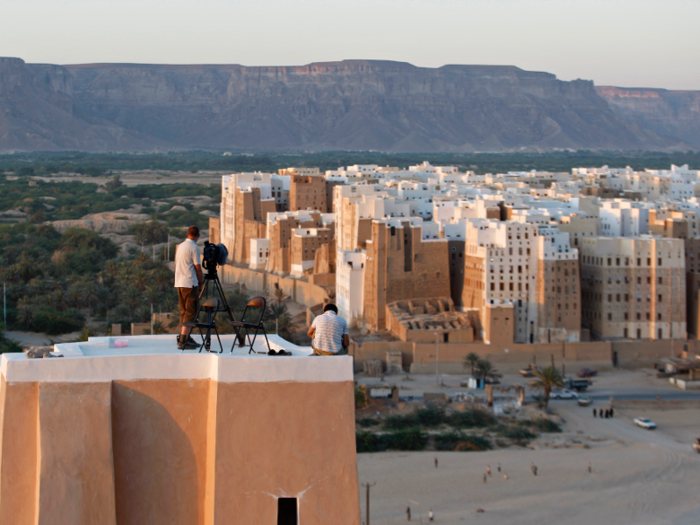- Home
- slideshows
- miscellaneous
- Inside war-torn Yemen's ancient skyscraper city, dubbed the 'Manhattan of the desert,' that's on the brink of ruin
Inside war-torn Yemen's ancient skyscraper city, dubbed the 'Manhattan of the desert,' that's on the brink of ruin
From so high up, it might not look like much, but the Yemen city of Shibam has been around for 1,700 years. Positioned on the crossroads between Europe, Africa, and Asia, it was once an important stop for spice and incense traders.

Shibam is a strategically built city. It sits on the highest point in the green valley of Wadi Hadramaut, the longest fertile valley in the Arabian Peninsula, nestled between two mountains. Shibam is almost completely isolated from other cities.
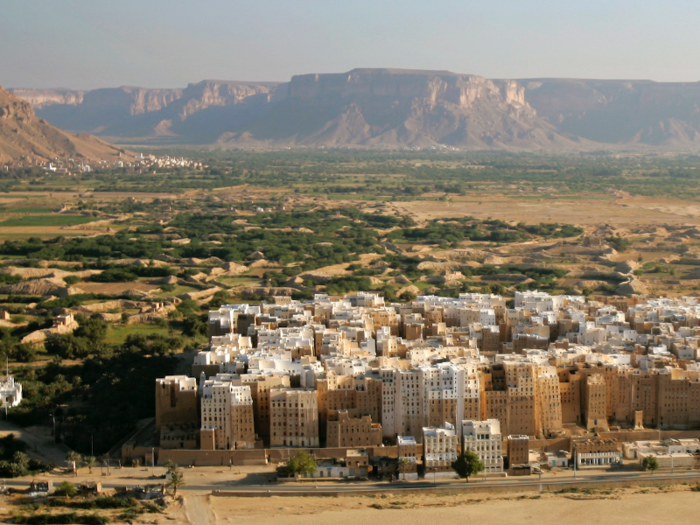
Sources: The New York Times, The New York Times
Named after a Yemen King, it used to be overlooked, and protected, by the fortress city Kawkaban.
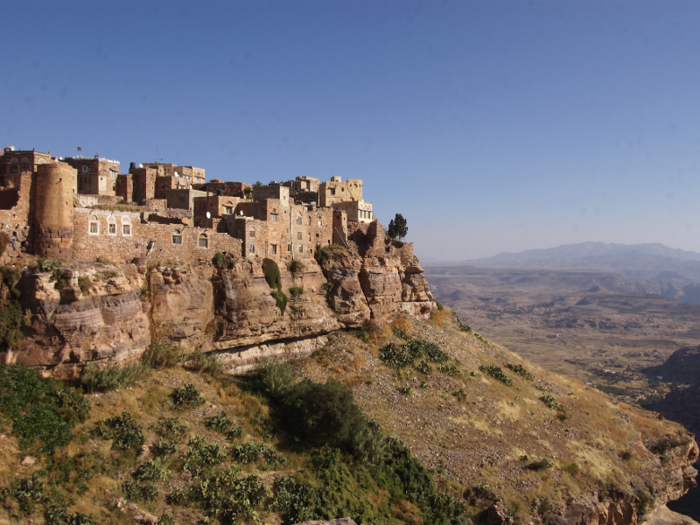
Sources: The Guardian, Washington Post
But in 2015 Kawkaban was turned to rubble, when American-supported Saudi fighter jets fired missiles at the fortress, destroying 700-year-old houses and the city's ancient gateway.
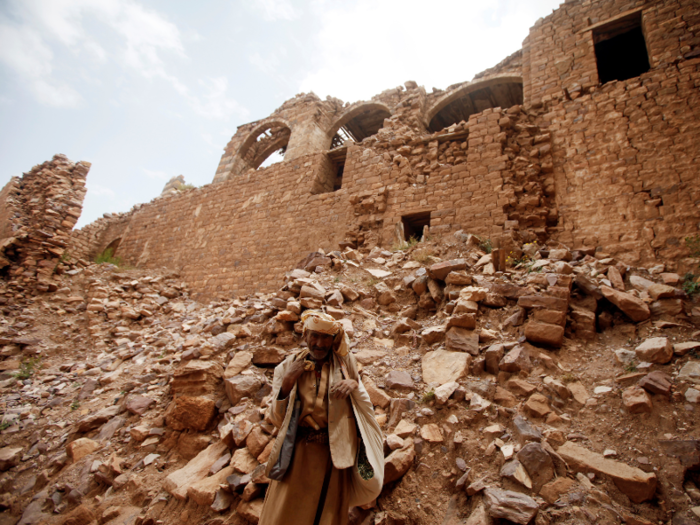
Source: Washington Post
Amadou-Mahtar M'Bow, former director-general of UNESCO, wrote in favor of Shibam's defense and upkeep: "The traveler who comes unexpectedly upon it, after crossing a vast and level desert, sees a dazzling sight: rising from groves of date palms in the bottom of a luxuriant valley, the city seems to soar gracefully towards the sky."
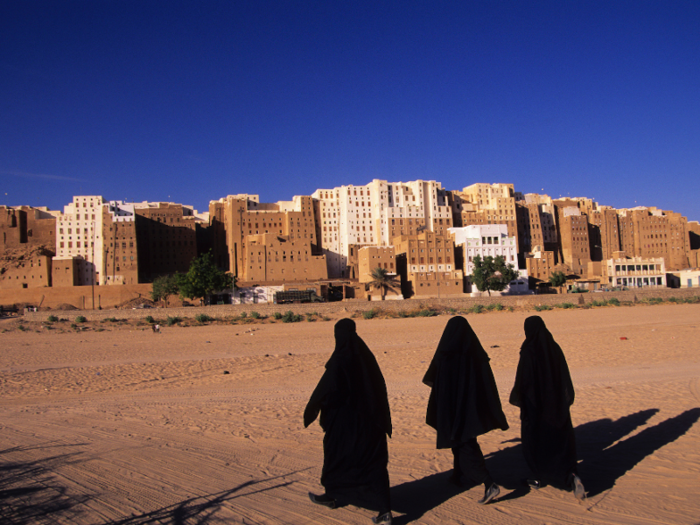
Source: UNESCO
When English traveler Freya Stark saw it in the 1930s, she deemed it "Manhattan in the desert," because its mud brick towers are set so closely together inside its city walls.
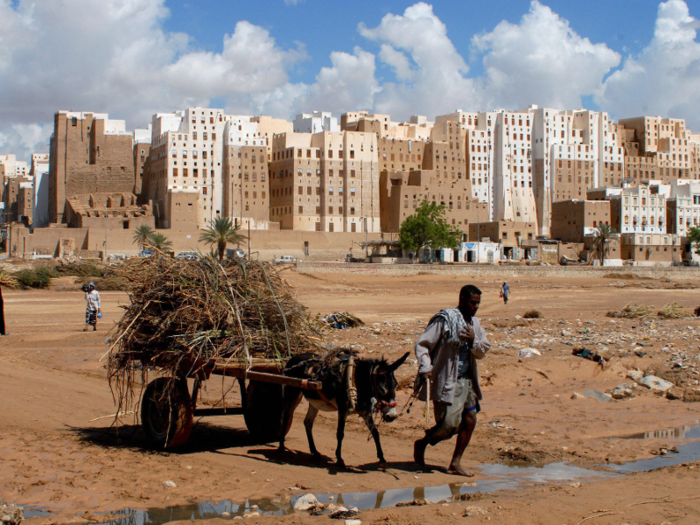
Sources: Asia Times, The New York Times
Its tallest building is 98 feet high, so it doesn't measure up to New York or Chicago. But unlike America's modern concrete jungles, these high rises were built from mud brick in the 16th century.
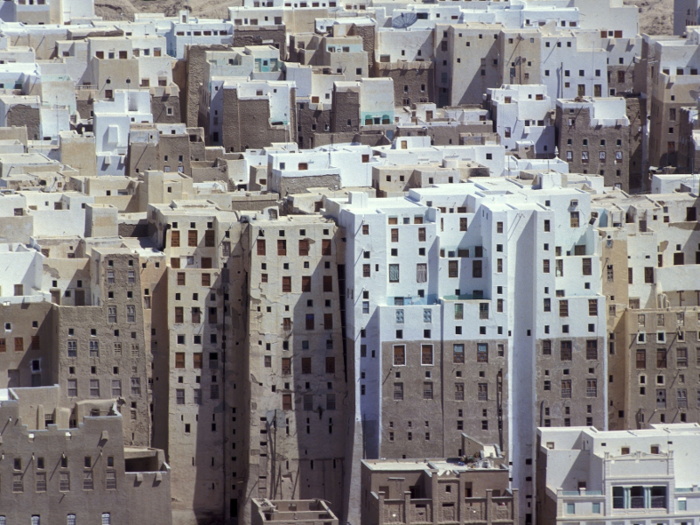
Source: The Guardian
The buildings were built close together to protect owners from clashes with rival families, or thieves, as well as to show off their wealth and power. Since the buildings are so close to each other, residents could even make a quick escape through connecting doors.
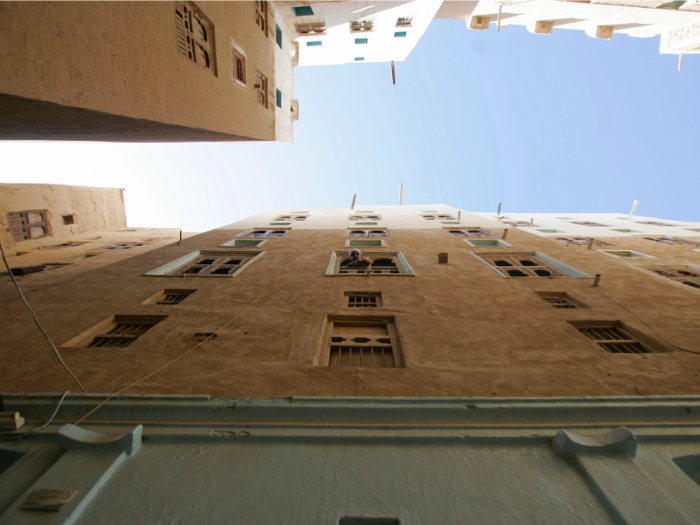
Sources: UNESCO, Business Insider
Hundreds of years on, Shibam's architecture is still relevant. Foster & Partners studied it. The architecture firm built Masdar, a modern energy-saving city on the outskirts of Abu Dhabi, pictured here.
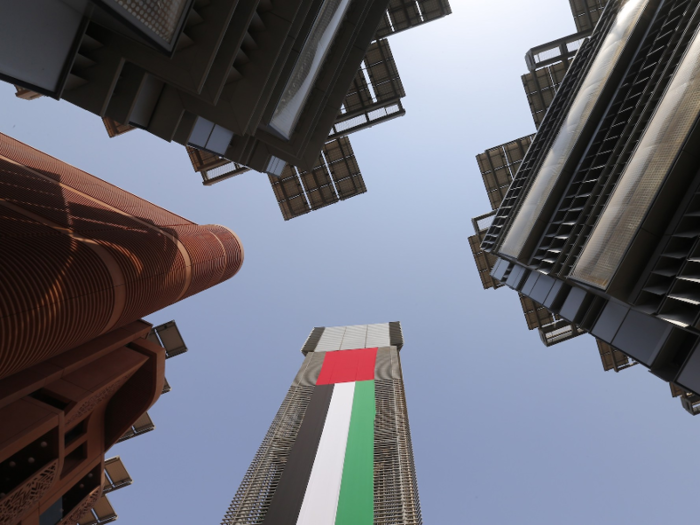
Source: The New York Times
Norman Foster, one of the firm's partners, looked at how Shibam, and other Arabian cities, were made livable in places where temperatures could get up to 150 degrees Fahrenheit.
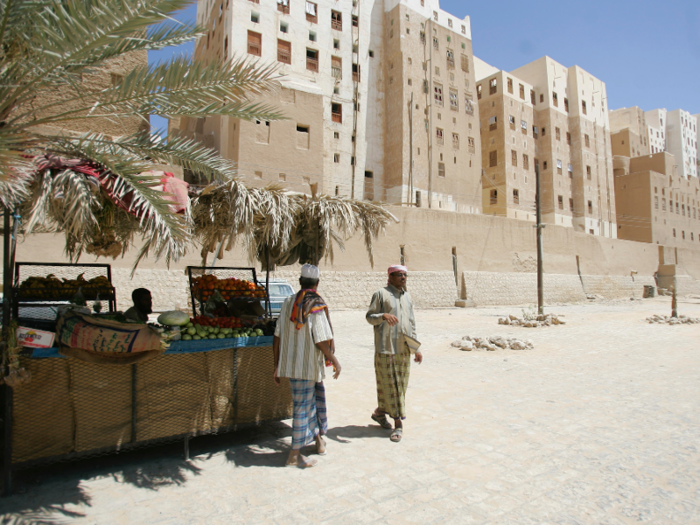
Source: The New York Times
For instance, Shibam's streets are too narrow for cars, but because of this they operate as wind tunnels, funneling air through the city, keeping it cool.
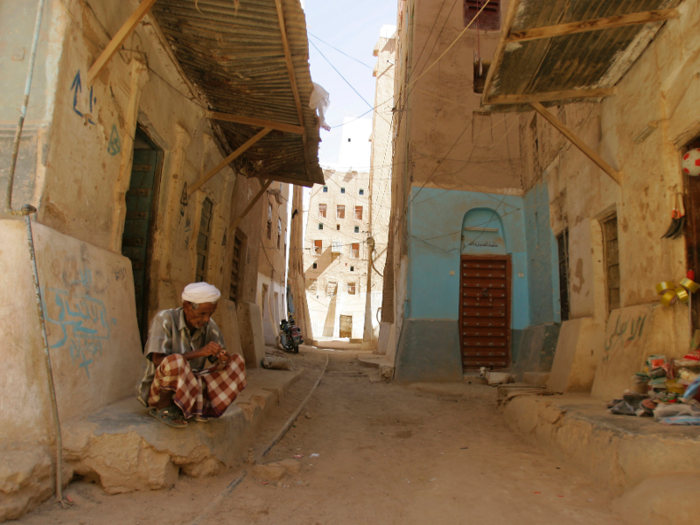
Source: The New York Times
The high buildings looming over the narrow streets also create shade. Foster found many of the streets ran at an angle against the sun's trajectory, meaning there was even less direct sun.
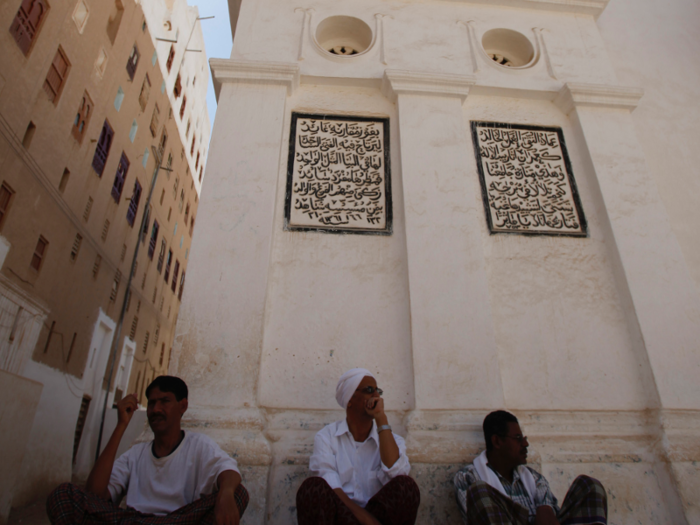
Sources: The Guardian, The New York Times
Like the city, the buildings are strategically divided. Typically, livestock, tools, and grain were stored on the bottom, windowless floor. The middle floors were for the elderly and for socializing. The highest floors were for young families, and newlyweds were on the roof.

Sources: National Geographic, The Guardian
The city has 444 buildings, and some towers have 40 family members living together.
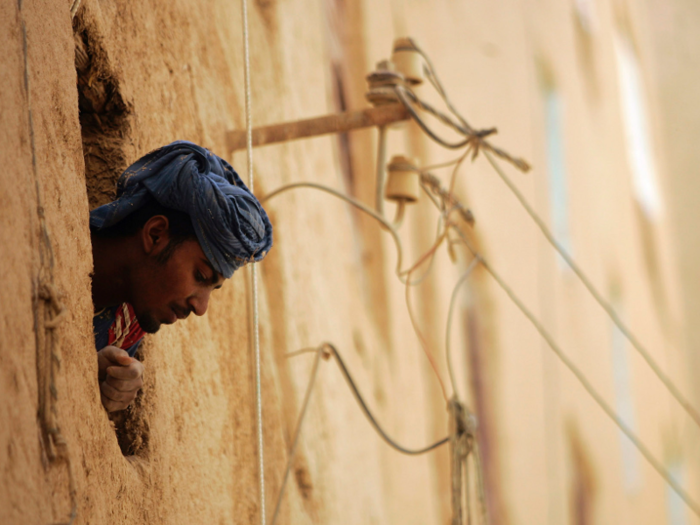
Source: The Guardian
About 3,000 people still live in the city, but 28-year-old resident Ali Abdullah told The Guardian lots of young people had left, because it was difficult to rely on any income, unless the city starts being preserved again.
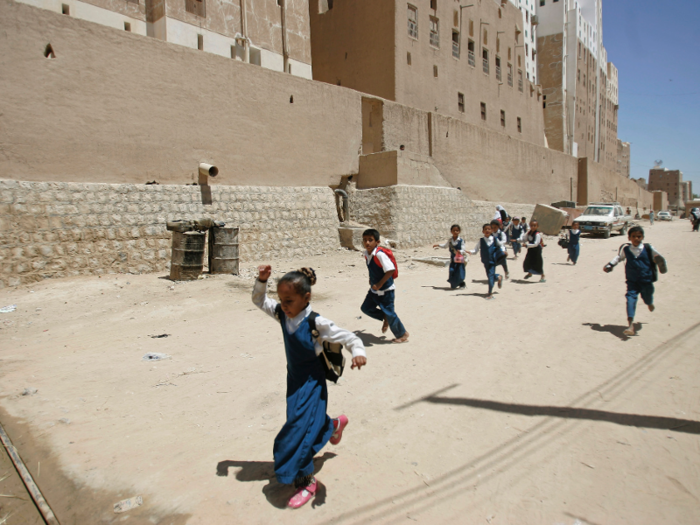
Source: The Guardian
Those who do still live there can visit cafes. Tom Downey, a travel writer for The New York Times, said he encountered a local cafe as soon as he entered the city.
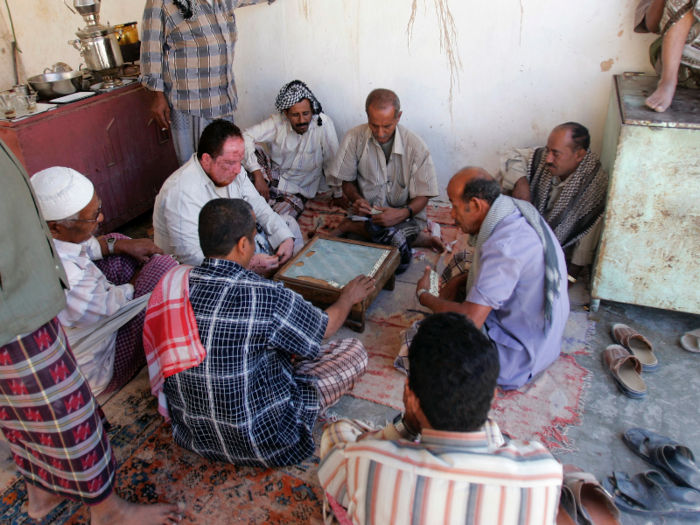
Source: The New York Times
"Village men slammed down dominoes under the dwindling light of the evening sun and sipped glasses of sweet, scalding tea," Downey wrote.
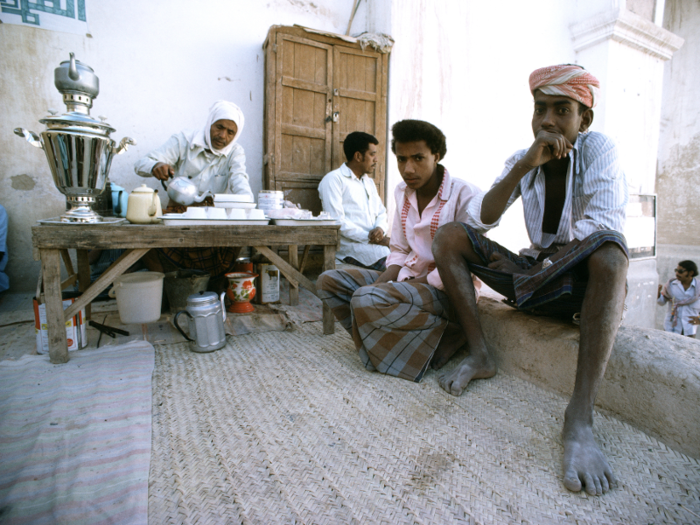
Source: The New York Times
People can also visit the mosque. While the city was mostly rebuilt after severe flooding in 1532, the city's main mosque was built in 904.
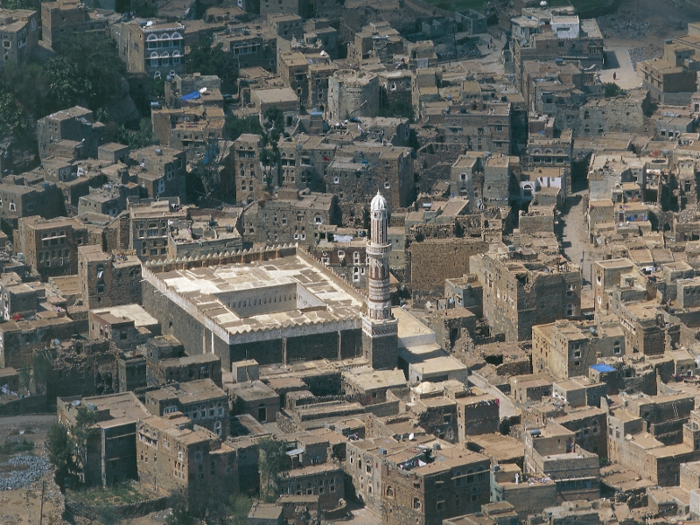
Source: Business Insider
Outside the city, the land is fertile from regular floods. Farmers harness it for growing crops.
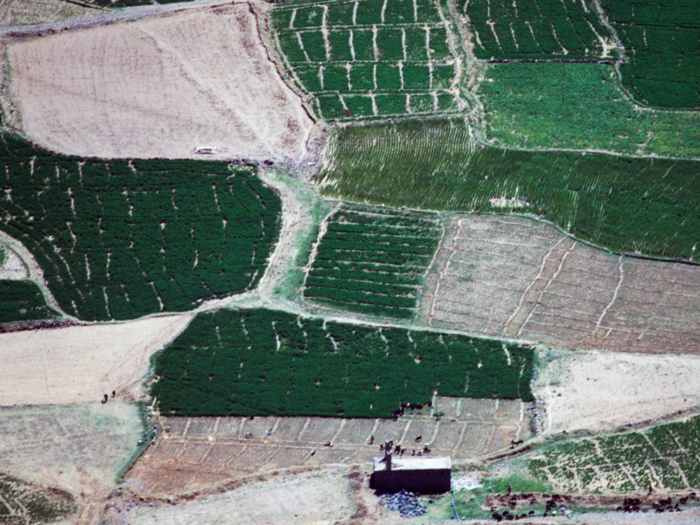
Source: Business Insider
Their yields cater for a lot of the remaining population. Once the harvest is over, the focus turns to soil, which is gathered for repairs.
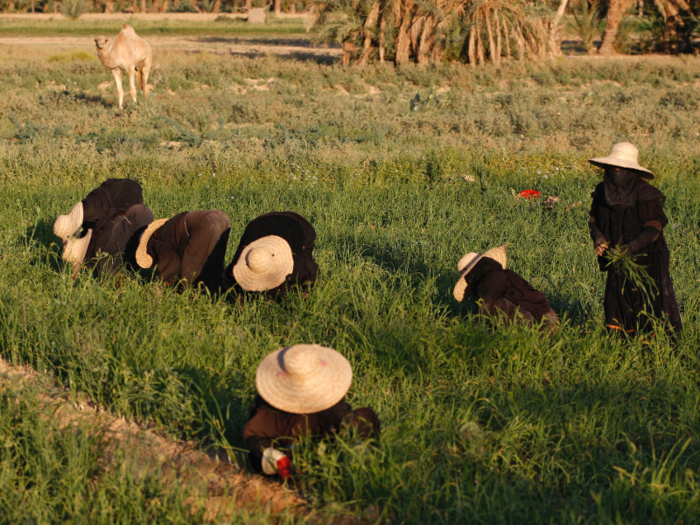
Source: Business Insider
The towers need regular maintenance. Fresh coats of mud are applied to stop cracking and to maintain the walls' strength. The mixture is made from soil, hay, and water, and is left to harden in the sun over a number of days.
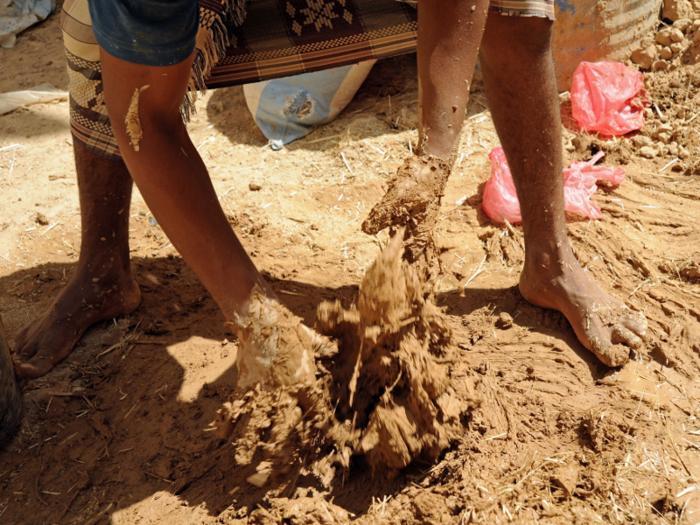
Sources: Slate, National Geographic, Business Insider
Salma Damluji, an expert on Arabia's traditional architecture, told news site City Metric that the use of mud brick was vital in coping with the harsh climate.
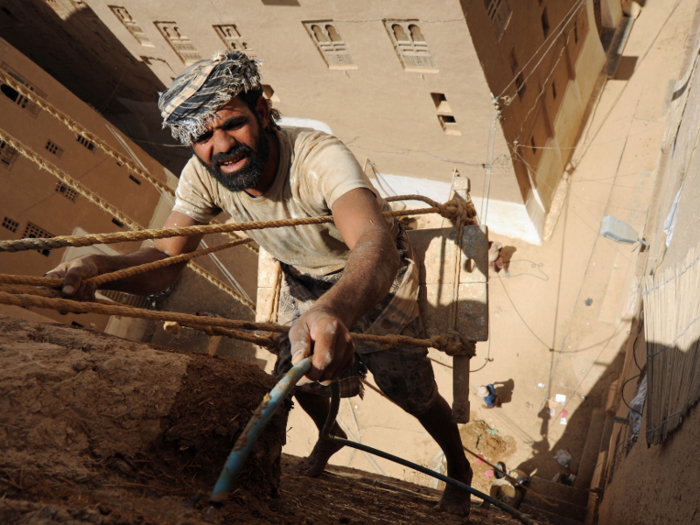
Source: City Metric
Mud brick has a lot going for it — it's cheap, it has a relatively low impact on the environment, it has a higher heat capacity than concrete, and the bricks are reusable, she said.
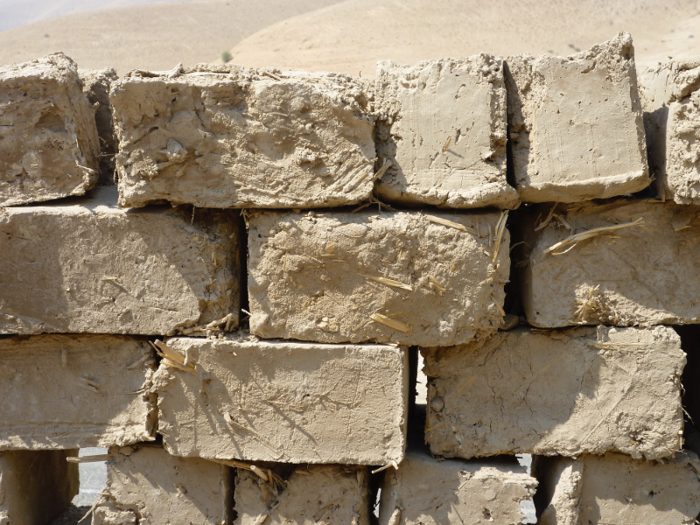
Source: City Metric
Mud bricks, also known as adobe, are also fire-proof, water-resistant, and offer relatively good insulation.
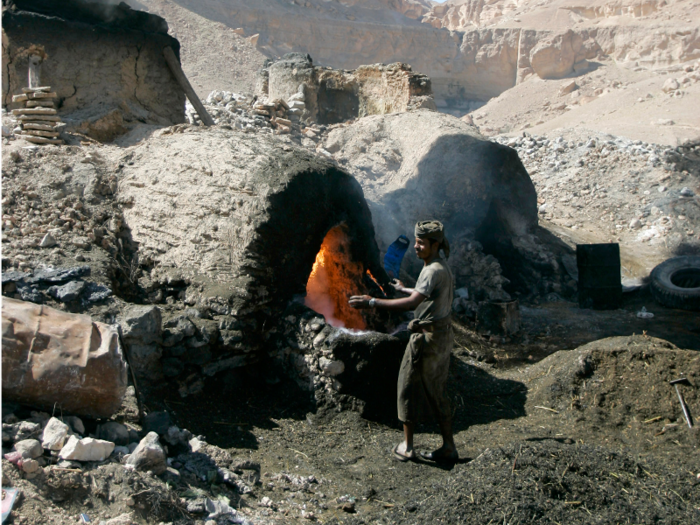
Sources: City Metric, American Survival Guide
It's not just the mud bricks that cater to the climate. Wooden windows reflect the sun's glare, and enable air circulation. Holes in the ceilings also provide ventilation.
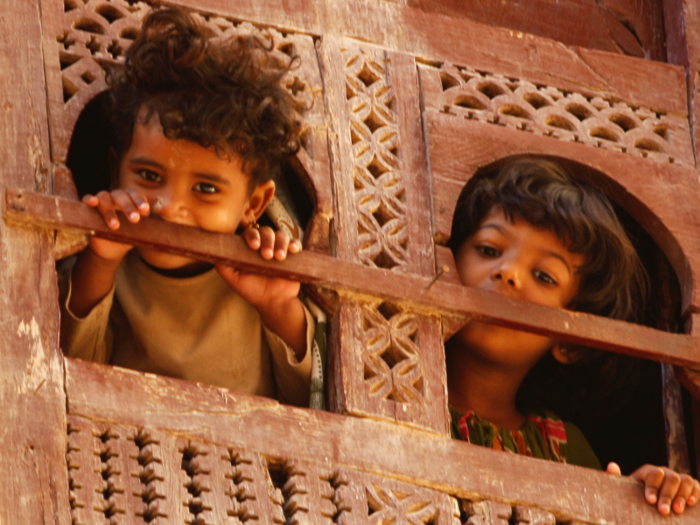
In the years after it was made a UNESCO site, tourism picked up for the city. In 2008, more than 6,500 tourists visited Shibam. This might not sound like much, but with a population of 3,000 people, it's quite a number.
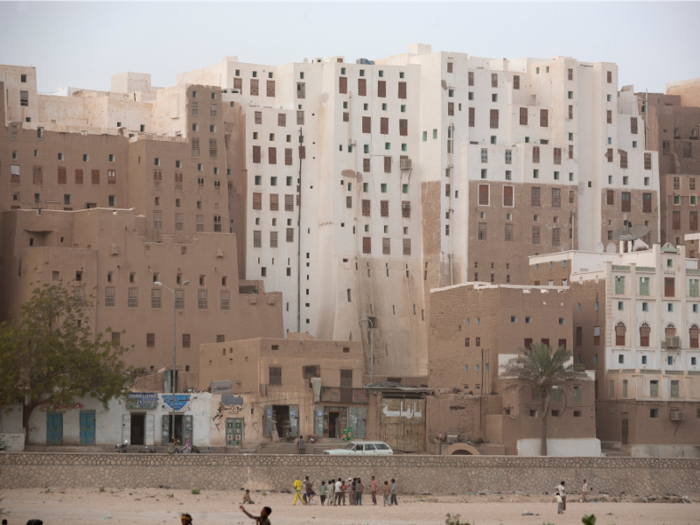
Sources: Daily News Site
In contrast, New York, another skyscraper city, had a record high of 65 million visitors in 2018, while it has nearly 9 million residents. And New York is a lot easier to get to than Shibam.
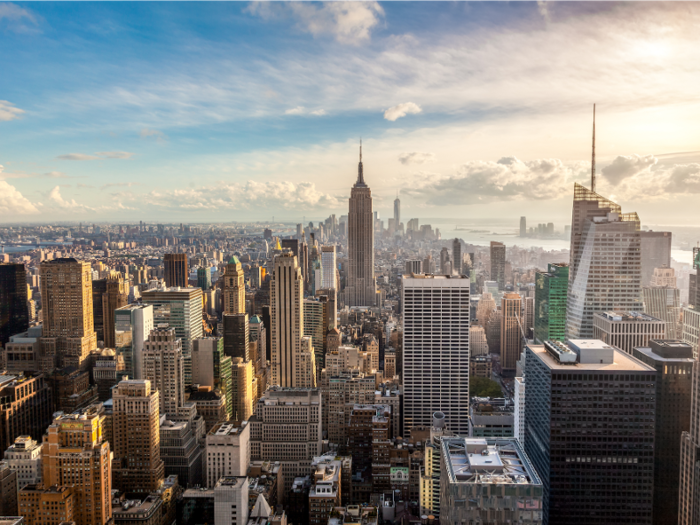
Sources: The New York Times, The New York Times
But Shibam's tourism industry had peaked by 2008. The first blow for the city came that October, when Shibam experienced severe flooding from a massive tropical storm.
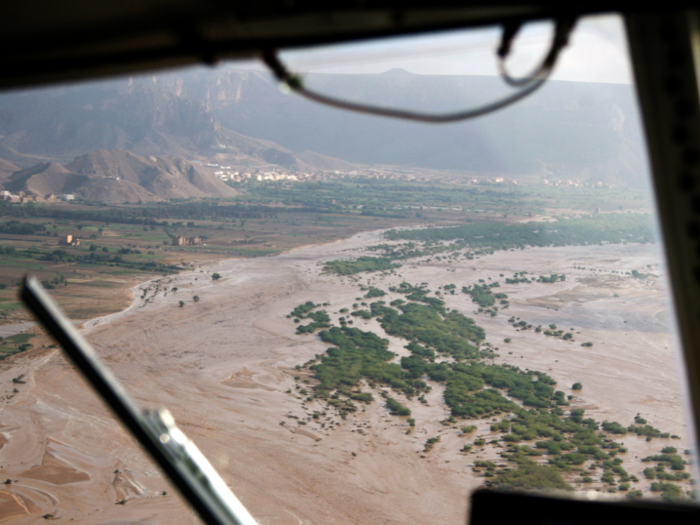
Sources: Business Insider, Al Jazeera
The flooding caused damage to several buildings and toppled some of its mud brick towers.
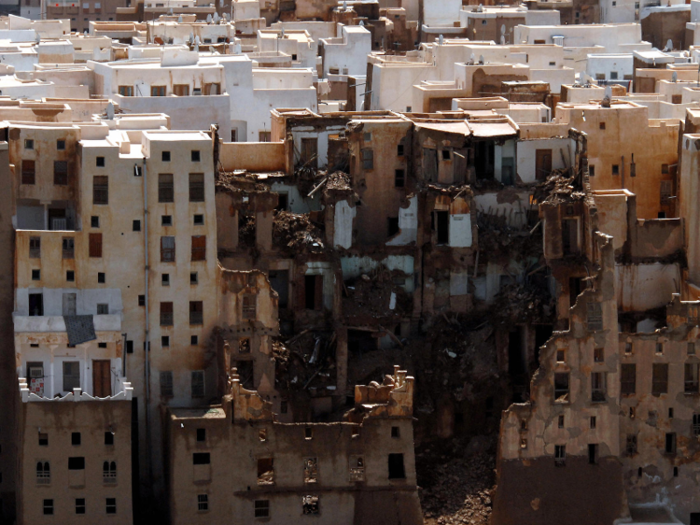
Sources: Asia Times, National Geographic
One resident, named Ahmed Salem, told The New York Times that his family screamed while their mud brick house disintegrated as the lower floors flooded. He fled, only to return the following day to pick up valuables. He then watched his home topple down in front of him.

Source: The New York Times
In 2009, things got worse for the city when four South Korean tourists, who were taking in a view of Shibam, were killed in an Al Qaeda bomb attack just outside the city.
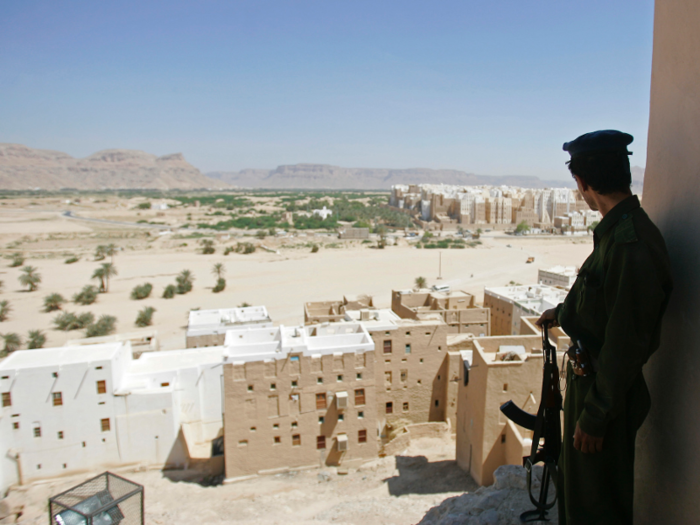
Source: Asia Times, The New York Times
Since the Arab Spring swept Yemen in 2011, tourist numbers have plummeted. At the same time, government funding for preserving the city stopped coming in.
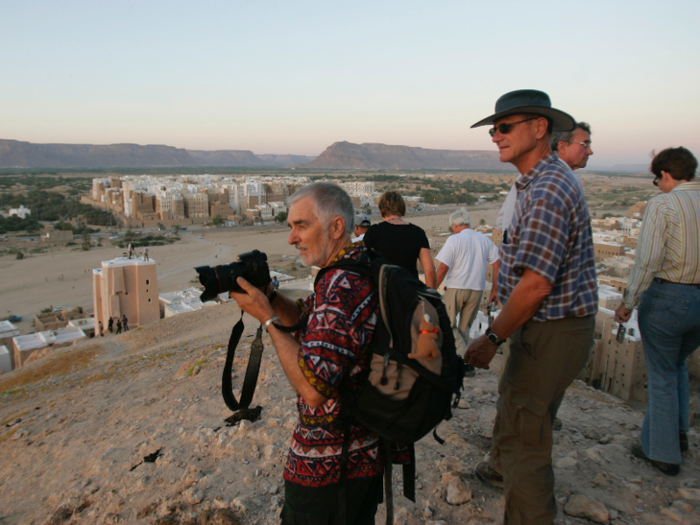
Source: The Guardian
In 2015, there was another terrorist attack, when a car filled with explosives drove into a military convoy and exploded. The explosion is said to have shaken the fragile city, and is the most damaging attack to date. The Islamic State claimed responsibility.
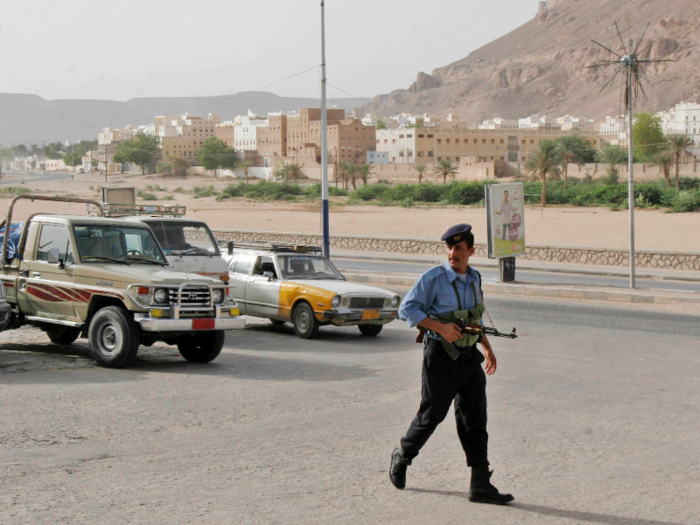
Sources: Asia Times, The New York Times, National Geographic
In March 2015, Yemen's violent civil war, between the Yemen government and Houthi rebels, began.
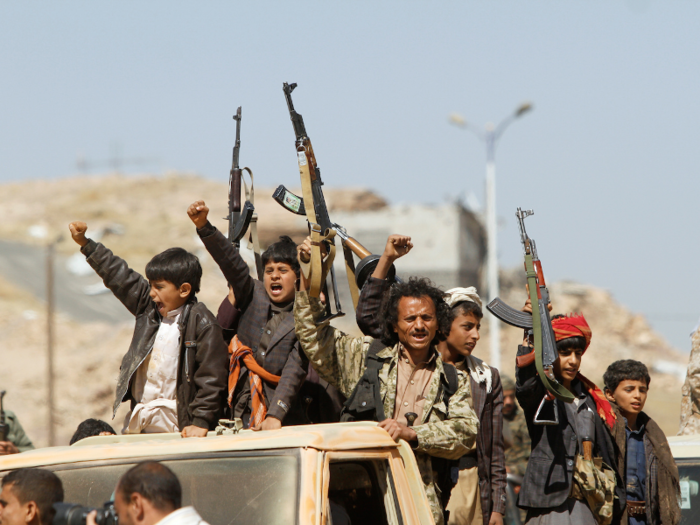
Source: Asia Times
It has led to the world's largest humanitarian crisis, with 22 million people needing food, water, shelter or sanitation.

Sources: Asia Times, Business Insider
The civil war has not caused outright damage to Shibam. But the threat of the war and airstrikes in the region led UNESCO to add the city to the World Heritage in Danger list in July 2015, alongside the city of Sana'a, which was damaged from the conflict.

Sources: The Conversation, UNESCO
Residents fear more of Shibam will crumble. Already, two towers have collapsed in recent years, and 15 more could go the same way if they're not repaired soon.
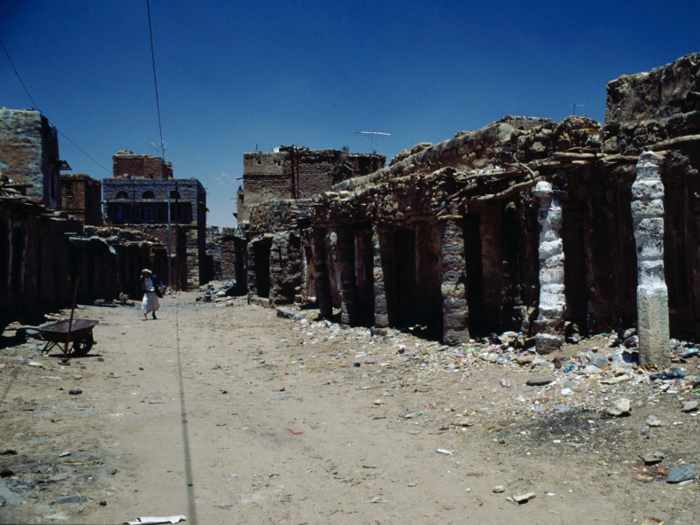
Source: The Guardian
In February 2019, 13 feet of the city's surrounding wall collapsed. Without the wall, the city has little protection from flooding. But Arfan Faraj, a local builder, told Asia Times the collapse was good for one thing — it brought attention to the state of the crumbling city. If the wall collapses, he said, the houses will follow.
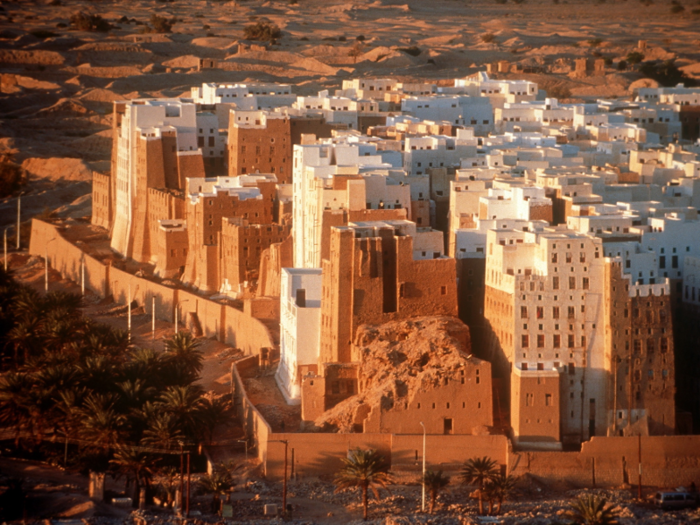
Sources: Asia Times, Business Insider
Hassan Aydeed, the local head of a group that preserves Yemen's historic cities, wasn't so positive. He called on his government or the international community to come to Shibam's aid. "If the negligence goes on," he told Asia Times, "we will be forced into leaving the city."
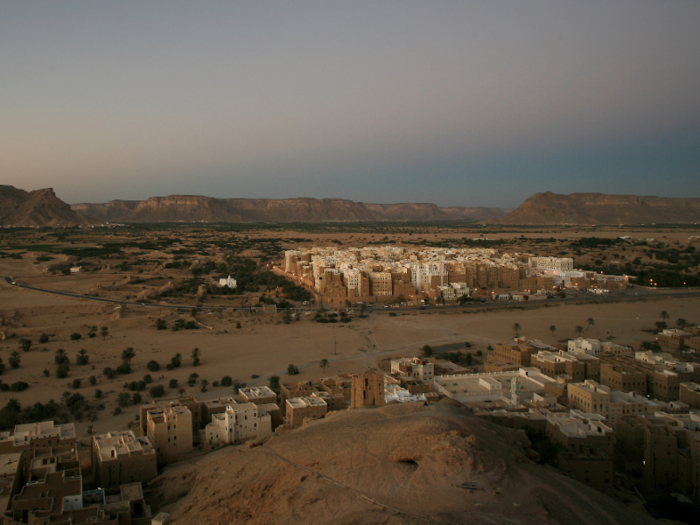
Sources: Asia Times, Business Insider
Popular Right Now
Popular Keywords
Advertisement
